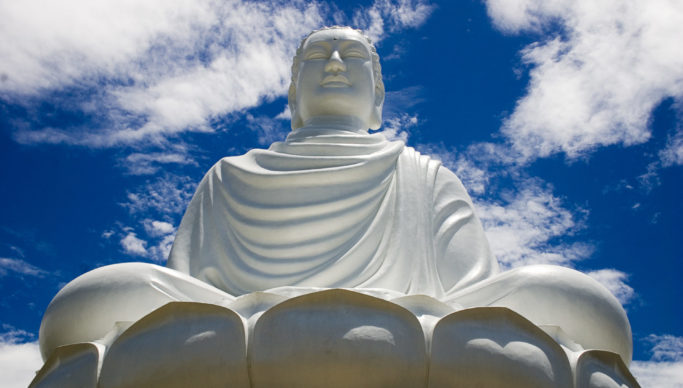
Burma’s Military Unveils Massive Buddha Statue in Bid to Garner Support Amid Civil War
- By Alison Lesley --
- 07 Aug 2023 --
Amid the ongoing civil war in Burma (Myanmar) and what UN Secretary-General Antonio Guterres has described as the ethnic cleansing of its minority Muslim Rohingya population, the country’s military junta has erected an 81-foot marble statue of a seated Buddha weighing more than 5,000 tons and said to be capable of withstanding 120-mile winds as well as powerful earthquakes.
Senior General Min Aung Hlaing, the head of the military government and also the patron of the statue, personally oversaw its installation in a 228-acre site in Naypyitaw, Burma’s capital. The project includes small pagodas, ordination halls, rest houses, water fountains, lakes and a park.
Work on the statue began in October 2021, eight months after Burma’s military regime seized power from a democratically elected government, unleashing a civil war that has resulted in the loss of thousands of lives, displaced millions of people, and caused extensive destruction, including the deaths of some 24,000 Rohingya, the burning of 362 Rohingya villages as well as damage to Buddhist monasteries, Christian churches, and mosques.
Min Aung Hlaing has been quoted many times in state media, asserting that the marble statue of the sitting Buddha will be the tallest in the world—a claim that is difficult to independently verify.
The general has also emphasized that the construction of the Buddha statue is aimed at demonstrating how Theravada Buddhism has flourished in Burma, making the Southeast Asian country a prosperous focal point of the faith, while contributing to global peace and stability.
“The military ruler has seemingly staked his karmic fortunes on the statue’s successful completion,” a July 3 article in the Asia Times newspaper noted.
According to state media reports quoted by the paper, the statue depicts a very common Buddha pose, “with 32 great characteristics and 80 small characteristics of the Lord Buddha.”
Burmese generals who perceive themselves as the guardians and promoters of Buddhism have lately accelerated the construction of pagodas and the presentation of offerings to revered monks. The military leaders believe their nations will not only earn them religious merit but also garner popular support.
Additionally, the strategy also helps solidify the military’s long-term alliance with right-wing monks who share its ultranationalist beliefs and have substantial followings, thus enabling the junta to mobilize support for political endeavors.
But unlike his statue, with the Buddha’s dedication to compassion and help of all living beings, it is doubtful that he would be smiling down on the people of Myanmar today.


















